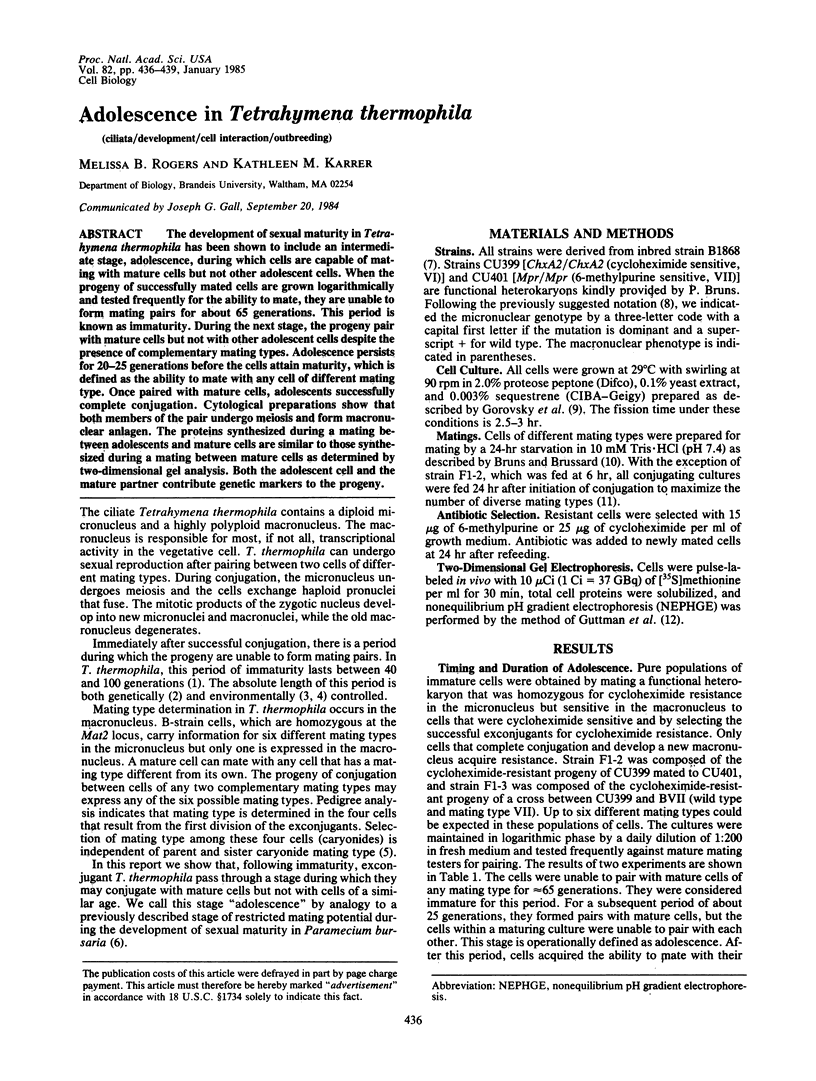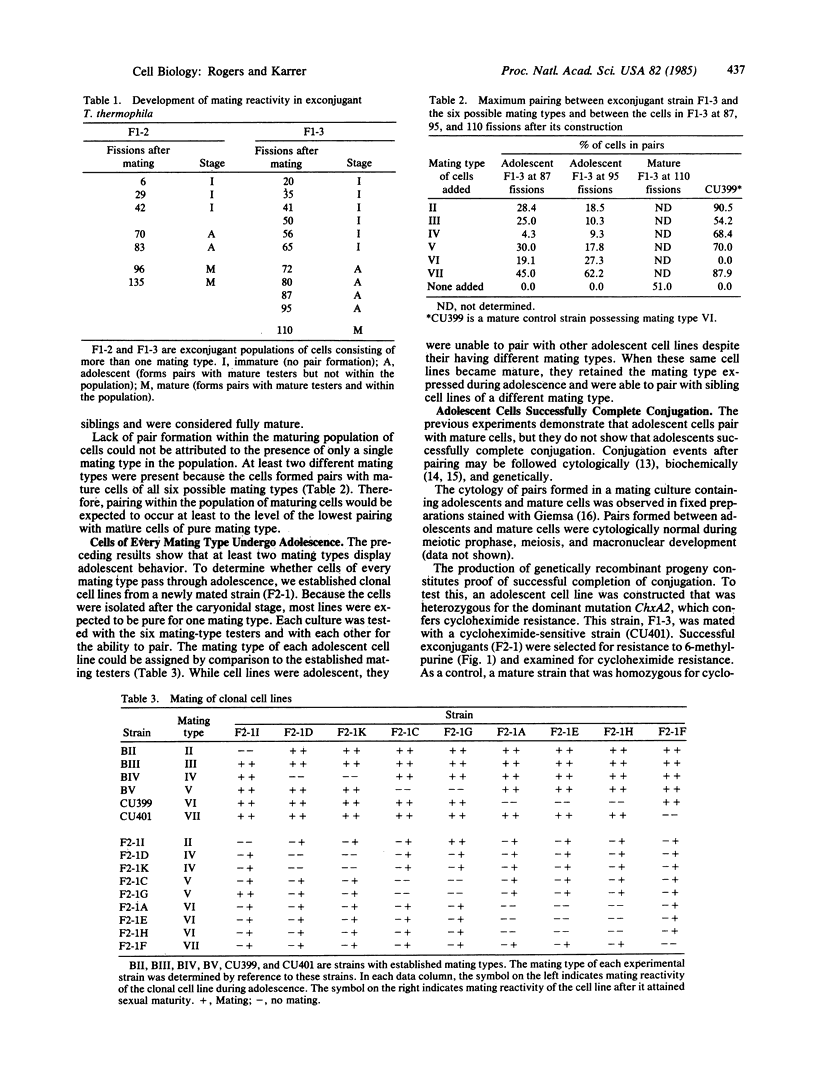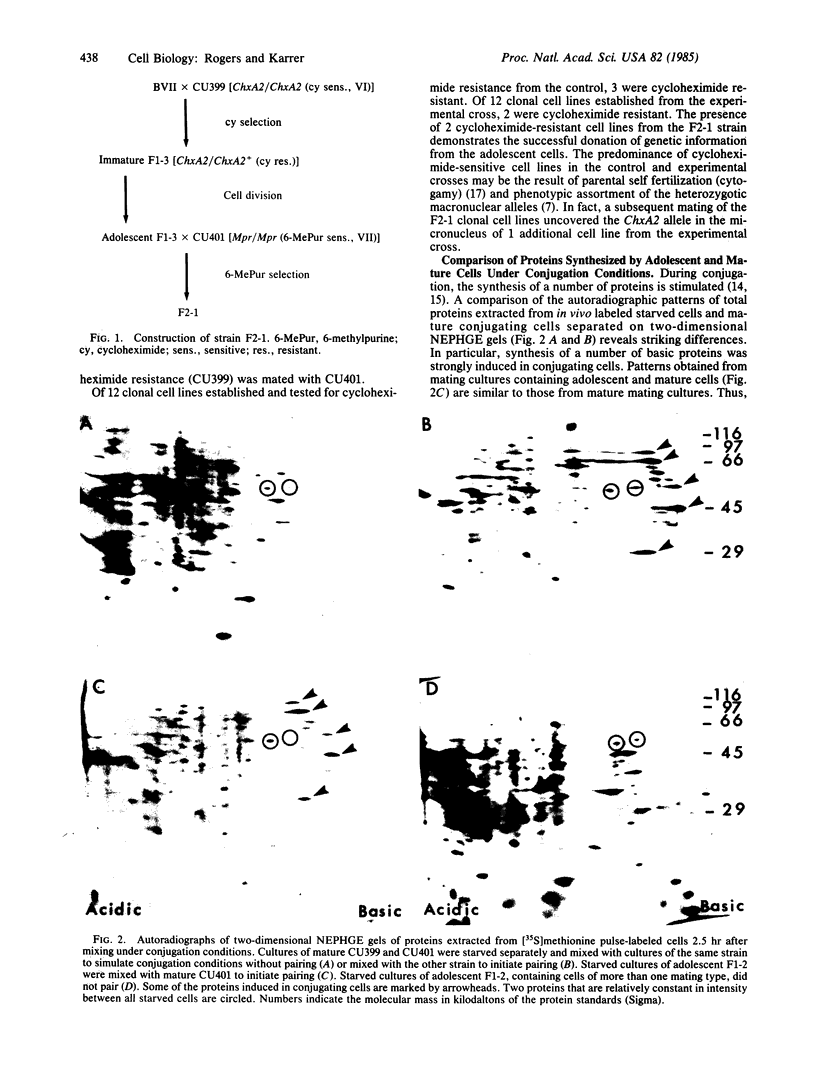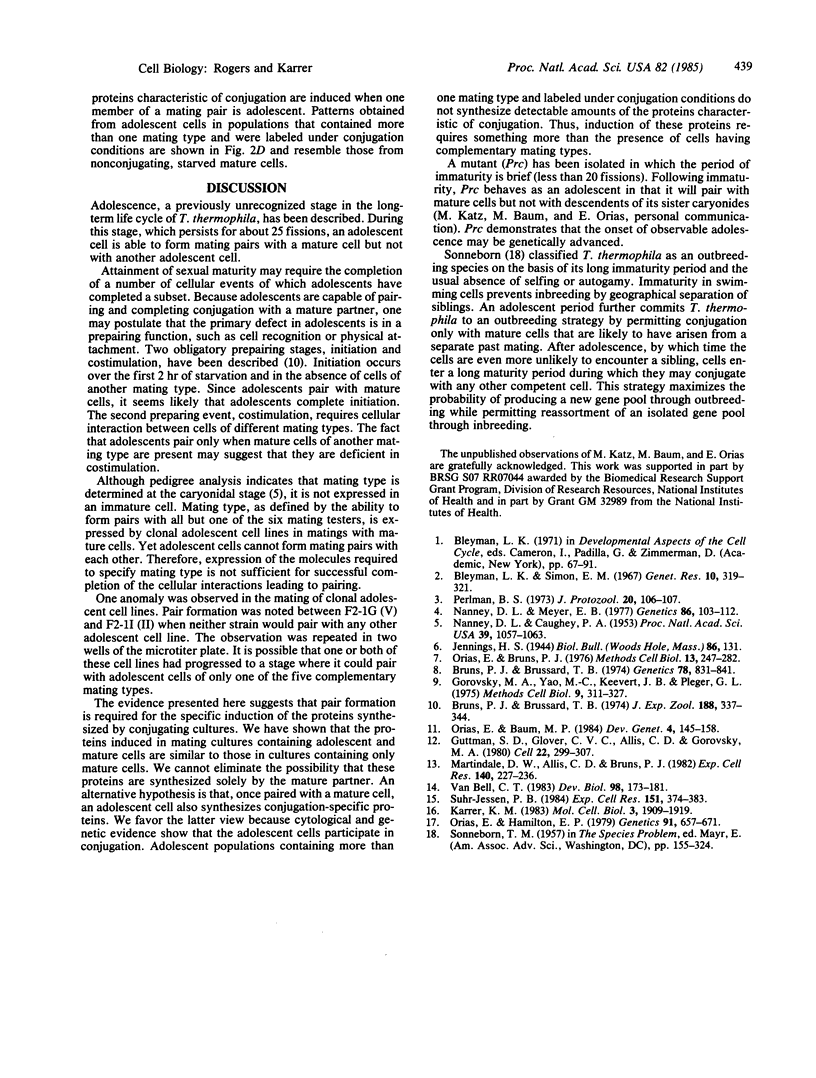Abstract
The development of sexual maturity in Tetrahymena thermophila has been shown to include an intermediate stage, adolescence, during which cells are capable of mating with mature cells but not other adolescent cells. When the progeny of successfully mated cells are grown logarithmically and tested frequently for the ability to mate, they are unable to form mating pairs for about 65 generations. This period is known as immaturity. During the next stage, the progeny pair with mature cells but not with other adolescent cells despite the presence of complementary mating types. Adolescence persists for 20-25 generations before the cells attain maturity, which is defined as the ability to mate with any cell of different mating type. Once paired with mature cells, adolescents successfully complete conjugation. Cytological preparations show that both members of the pair undergo meiosis and form macronuclear anlagen. The proteins synthesized during a mating between adolescents and mature cells are similar to those synthesized during a mating between mature cells as determined by two-dimensional gel analysis. Both the adolescent cell and the mature partner contribute genetic markers to the progeny.
Full text
PDF



Images in this article
Selected References
These references are in PubMed. This may not be the complete list of references from this article.
- Bleyman L. K., Simon E. M. Genetic control of maturity in Tetrahymena pyriformis. Genet Res. 1967 Dec;10(3):319–321. doi: 10.1017/s0016672300011083. [DOI] [PubMed] [Google Scholar]
- Bruns P. J., Brussard T. B. Pair formation in tetrahymena pyriformis, an inducible developmental system. J Exp Zool. 1974 Jun;188(3):337–344. doi: 10.1002/jez.1401880309. [DOI] [PubMed] [Google Scholar]
- Bruns P. J., Brussard T. B. Positive selection for mating with functional heterokaryons in Tetrahymena pyriformis. Genetics. 1974 Nov;78(3):831–841. doi: 10.1093/genetics/78.3.831. [DOI] [PMC free article] [PubMed] [Google Scholar]
- Gorovsky M. A., Yao M. C., Keevert J. B., Pleger G. L. Isolation of micro- and macronuclei of Tetrahymena pyriformis. Methods Cell Biol. 1975;9(0):311–327. doi: 10.1016/s0091-679x(08)60080-1. [DOI] [PubMed] [Google Scholar]
- Guttman S. D., Glover C. V., Allis C. D., Gorovsky M. A. Heat shock, deciliation and release from anoxia induce the synthesis of the same set of polypeptides in starved T. pyriformis. Cell. 1980 Nov;22(1 Pt 1):299–307. doi: 10.1016/0092-8674(80)90177-4. [DOI] [PubMed] [Google Scholar]
- Karrer K. M. Germ line-specific DNA sequences are present on all five micronuclear chromosomes in Tetrahymena thermophila. Mol Cell Biol. 1983 Nov;3(11):1909–1919. doi: 10.1128/mcb.3.11.1909. [DOI] [PMC free article] [PubMed] [Google Scholar]
- Martindale D. W., Allis C. D., Bruns P. J. Conjugation in Tetrahymena thermophila. A temporal analysis of cytological stages. Exp Cell Res. 1982 Jul;140(1):227–236. doi: 10.1016/0014-4827(82)90172-0. [DOI] [PubMed] [Google Scholar]
- Nanney D. L., Caughey P. A. Mating Type Determination in Tetrahymena Pyriformis. Proc Natl Acad Sci U S A. 1953 Oct;39(10):1057–1063. doi: 10.1073/pnas.39.10.1057. [DOI] [PMC free article] [PubMed] [Google Scholar]
- Nanney D. L., Meyer E. B. Traumatic induction of early maturity in tetrahymena. Genetics. 1977 May;86(1):103–112. doi: 10.1093/genetics/86.1.103. [DOI] [PMC free article] [PubMed] [Google Scholar]
- Orias E., Bruns P. J. Induction and isolation of mutants in Tetrahymena. Methods Cell Biol. 1976;13:247–282. [PubMed] [Google Scholar]
- Orias E., Hamilton E. P. Cytogamy: An Inducible, Alternate Pathway of Conjugation in TETRAHYMENA THERMOPHILA. Genetics. 1979 Apr;91(4):657–671. doi: 10.1093/genetics/91.4.657. [DOI] [PMC free article] [PubMed] [Google Scholar]
- Suhr-Jessen P. B. Stage-specific changes in protein synthesis during conjugation in Tetrahymena thermophila. Exp Cell Res. 1984 Apr;151(2):374–383. doi: 10.1016/0014-4827(84)90388-4. [DOI] [PubMed] [Google Scholar]
- Van Bell C. T. An analysis of protein synthesis, membrane proteins, and concanavalin A-binding proteins during conjugation in Tetrahymena thermophila. Dev Biol. 1983 Jul;98(1):173–181. doi: 10.1016/0012-1606(83)90346-9. [DOI] [PubMed] [Google Scholar]






